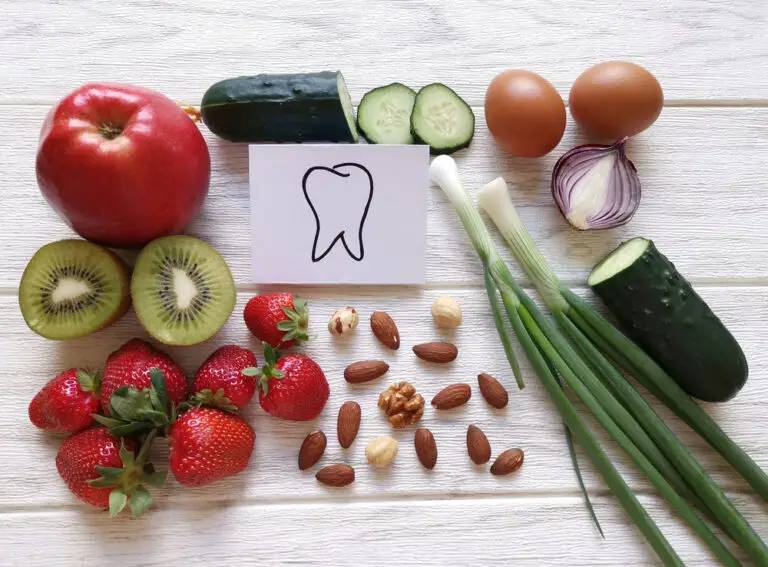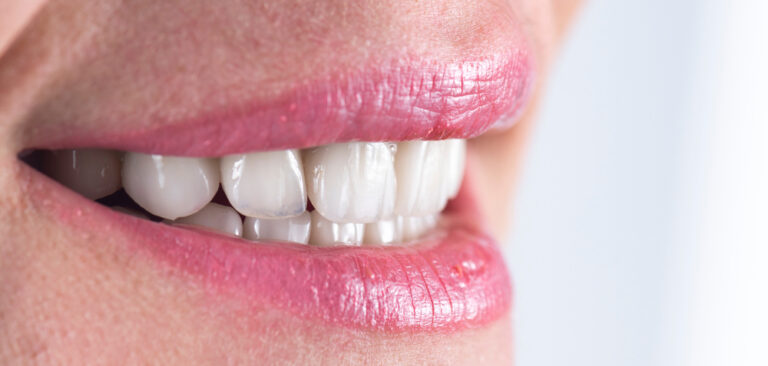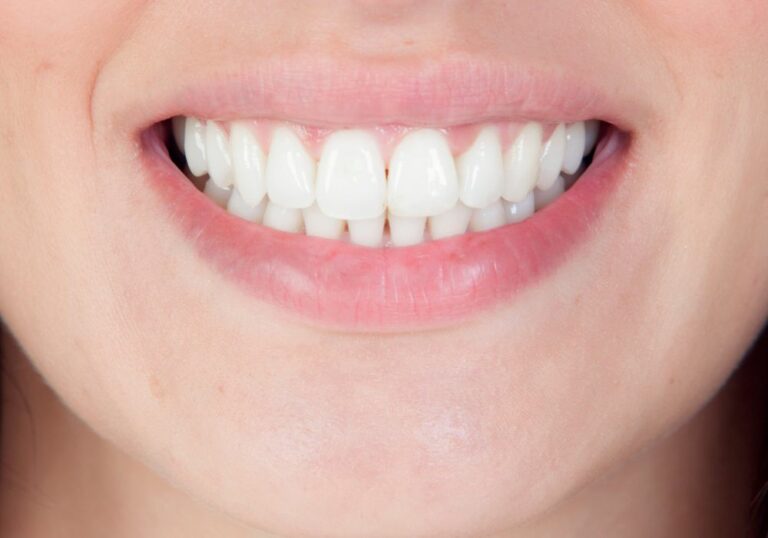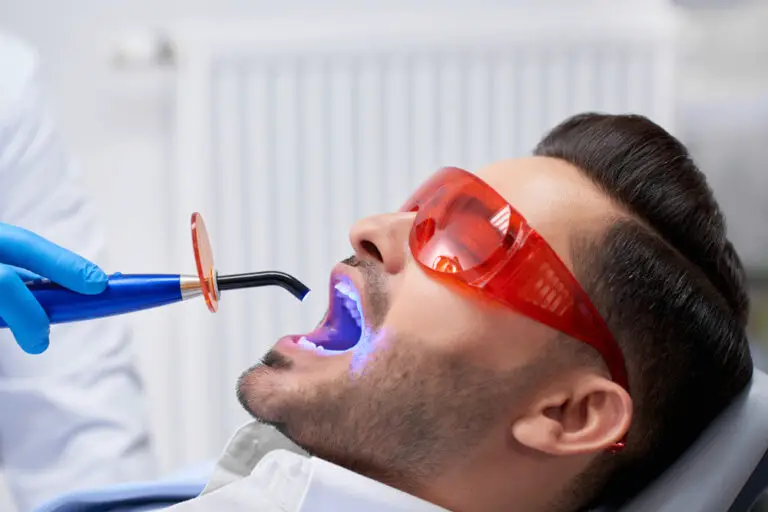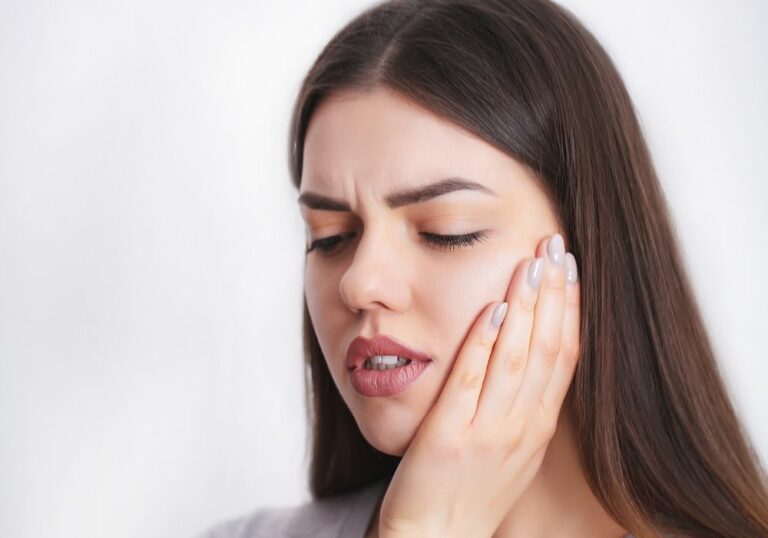Are you tired of seeing blood in the sink every time you brush your teeth? Bleeding gums can be a common problem, but it’s not one that you should ignore. In fact, it could be a sign of gum disease, which can lead to tooth loss if left untreated. Fortunately, there are steps you can take to stop your gums from bleeding when you brush.
One of the most important things you can do is to practice good oral hygiene. This means brushing your teeth twice a day for two minutes each time, flossing daily, and using an antiseptic mouthwash. You should also make sure to use a soft-bristled toothbrush, as brushing too hard with a hard-bristled brush can damage your gums and cause them to bleed. Additionally, be sure to replace your toothbrush every three to four months, or sooner if the bristles become frayed.
Understanding Gum Bleeding
Bleeding gums are a common problem that many people experience when brushing their teeth. It can be caused by a variety of factors, including poor oral hygiene, vitamin deficiencies, hormonal changes, and gum disease. Understanding the causes of gum bleeding can help you take steps to prevent it and keep your gums healthy.
One of the most common causes of bleeding gums is poor oral hygiene. When you don’t brush and floss regularly, plaque can build up along the gum line, causing inflammation and bleeding. Another common cause of bleeding gums is gum disease, which occurs when bacteria in the mouth infect and inflame the gums. Other factors that can contribute to gum bleeding include hormonal changes during pregnancy or menopause, vitamin deficiencies, and certain medications.
If you’re experiencing bleeding gums, it’s important to take steps to address the underlying cause. Improving your oral hygiene habits, such as brushing twice a day and flossing daily, can help reduce plaque buildup and prevent gum disease. You may also want to consider using an antiseptic mouthwash to help kill bacteria in the mouth. If your bleeding gums are caused by a vitamin deficiency, your doctor may recommend taking a supplement to address the issue.
In some cases, bleeding gums may be a sign of a more serious health condition, such as leukemia or oral cancer. If your bleeding gums persist despite improving your oral hygiene habits, it’s important to see your dentist or doctor for a proper diagnosis and treatment plan.
Common Causes of Gum Bleeding
If you’re experiencing bleeding gums while brushing, it’s essential to understand the possible causes. Here are some common reasons why your gums may bleed:
Poor Oral Hygiene
One of the most common causes of bleeding gums is poor oral hygiene. When you don’t brush and floss regularly, plaque builds up on your teeth and gums. Plaque is a sticky film of bacteria that irritates your gums and causes inflammation. Over time, this inflammation can lead to bleeding gums.
Gum Diseases
Bleeding gums can also be a sign of gum disease. Gingivitis is the most common form of gum disease, and it occurs when plaque builds up along the gumline. If left untreated, gingivitis can progress to periodontitis, a more severe form of gum disease that can lead to tooth loss. Other symptoms of gum disease include red, swollen, and tender gums, bad breath, and receding gums.
Medication Side Effects
Certain medications can also cause gum bleeding. Blood-thinning medications, such as aspirin and warfarin, can increase your risk of bleeding gums. Other medications, such as antihistamines and antidepressants, can cause dry mouth, which can lead to gum irritation and bleeding.
It’s essential to talk to your doctor if you think your medication may be causing your bleeding gums. They may be able to adjust your dosage or switch you to an alternative medication.
In summary, poor oral hygiene, gum diseases, and medication side effects are some of the common causes of bleeding gums. By maintaining good oral hygiene, visiting your dentist regularly, and talking to your doctor about any medication side effects, you can prevent bleeding gums and keep your mouth healthy.
Importance of Regular Dental Check-Ups
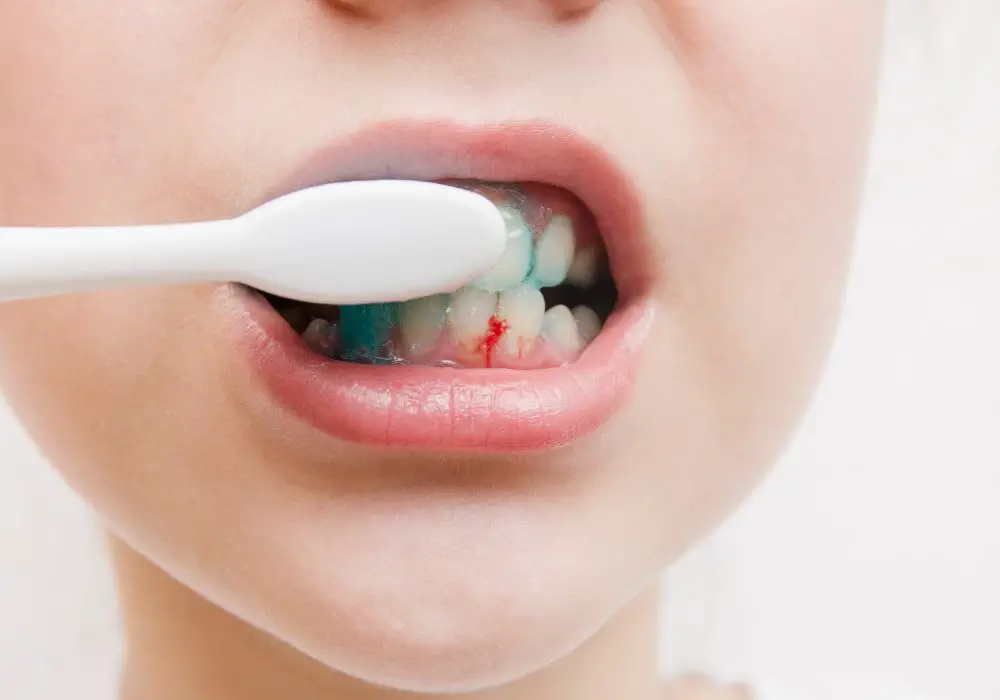
Regular dental check-ups are crucial to maintaining good oral health and preventing bleeding gums. During a dental check-up, your dentist can identify any early signs of gum disease and provide treatment before it becomes more severe.
Gum disease, also known as periodontitis, is a common condition that affects many people. It occurs when bacteria in plaque build up on teeth and gums, causing inflammation and bleeding. If left untreated, gum disease can lead to tooth loss and other serious health problems.
During a dental check-up, your dentist will examine your teeth and gums for signs of gum disease. They will also clean your teeth to remove any plaque or tartar buildup that can cause bleeding gums. Your dentist may also provide advice on how to improve your oral hygiene routine to prevent future bleeding gums.
In addition to preventing gum disease, regular dental check-ups can also help detect other oral health problems, such as cavities, oral cancer, and jaw problems. Early detection and treatment of these issues can prevent them from becoming more serious and potentially life-threatening.
It is recommended that you visit your dentist for a check-up at least once every six months. However, if you have a history of gum disease or other oral health problems, your dentist may recommend more frequent visits.
In summary, regular dental check-ups are essential for maintaining good oral health and preventing bleeding gums. By visiting your dentist regularly, you can catch and treat gum disease and other oral health problems early, before they become more severe.
Effective Brushing Techniques
When it comes to preventing bleeding gums while brushing, proper brushing technique is key. Here are some effective brushing techniques to try:
Choosing the Right Toothbrush
Choosing the right toothbrush can make a big difference in preventing bleeding gums. Look for a toothbrush with soft bristles, as hard bristles can irritate your gums and cause bleeding. Additionally, consider the size of the toothbrush head. A smaller head can help you reach all areas of your mouth, including the back teeth.
Proper Brushing Motion
Proper brushing motion is just as important as choosing the right toothbrush. Here are some tips to keep in mind:
- Hold your toothbrush at a 45-degree angle to your gums.
- Use gentle circular motions, rather than back-and-forth scrubbing.
- Brush for at least two minutes, twice a day.
- Don’t forget to brush your tongue and the roof of your mouth to remove bacteria and freshen your breath.
- Avoid brushing too hard, as this can damage your gums and cause bleeding.
By following these effective brushing techniques, you can help prevent bleeding gums while maintaining good oral hygiene. Remember to also floss daily and schedule regular dental checkups to keep your teeth and gums healthy.
Flossing: The Right Way
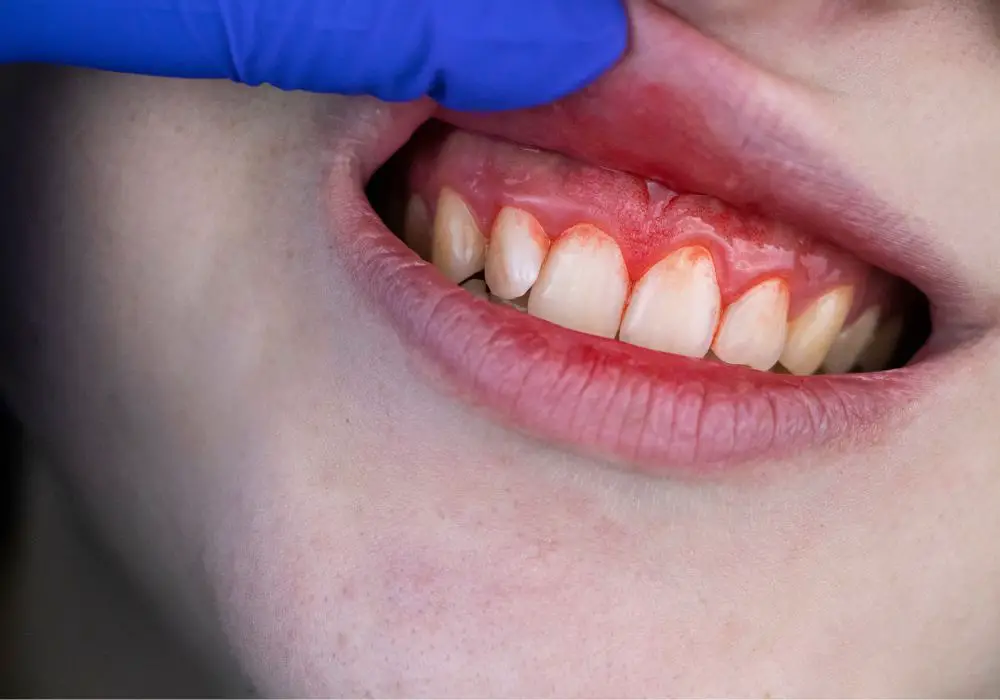
Flossing is an essential part of your oral hygiene routine. It helps remove plaque and food particles from between your teeth and along your gum line. However, if you’re not flossing correctly, it can actually cause your gums to bleed. Here are some tips to help you floss the right way:
Use Enough Floss
Make sure you’re using enough floss to clean between your teeth properly. A good rule of thumb is to use about 18 inches of floss. This will give you enough floss to wrap around your fingers and maneuver between your teeth without reusing the same section of floss.
Be Gentle
When you floss, be gentle. Don’t force the floss between your teeth or snap it against your gums. Instead, use a gentle sawing motion to slide the floss between your teeth. Then, curve the floss around the base of each tooth and gently slide it up and down, making sure to clean both sides of the tooth.
Use the Right Technique
There are different flossing techniques you can use, but the most common is the C-shape technique. To use this technique, curve the floss into a C-shape around the base of each tooth and gently slide it up and down, making sure to clean both sides of the tooth and go below the gum line.
Don’t Forget to Rinse
After you’ve finished flossing, rinse your mouth with water or mouthwash to remove any leftover debris. This will also help remove any bacteria that may have been loosened during flossing.
By following these tips, you can floss the right way and help prevent bleeding gums. Remember to floss at least once a day, and if you experience bleeding or pain, talk to your dentist.
Role of Mouthwash in Gum Health
Using mouthwash can be an effective way to maintain healthy gums and prevent bleeding. Mouthwash contains antiseptic ingredients that kill harmful bacteria in your mouth, which can lead to gum disease. Here are some ways that mouthwash can help improve your gum health:
- Reduces plaque buildup: Using mouthwash after brushing and flossing can help remove any leftover plaque that may have been missed. Plaque is a sticky film that forms on your teeth and can lead to gum disease if not removed.
- Freshens breath: Mouthwash can help freshen your breath by killing bacteria that cause bad breath. It can also help mask any odors that may be lingering in your mouth.
- Prevents gingivitis: Gingivitis is a mild form of gum disease that can cause bleeding and inflammation of the gums. Using mouthwash regularly can help prevent gingivitis by killing bacteria that can lead to the condition.
- Promotes healing: If you already have bleeding gums, using mouthwash can help promote healing by reducing inflammation and killing bacteria that can worsen the condition.
To get the most benefit from mouthwash, be sure to choose one that is specifically designed for gum health. Look for a mouthwash that contains fluoride, which can help strengthen your teeth and make them more resistant to decay. Additionally, be sure to follow the instructions on the label and use the mouthwash as directed.
While mouthwash can be a helpful tool in maintaining healthy gums, it should not be used as a replacement for brushing and flossing. It should be used in conjunction with a good oral hygiene routine that includes brushing twice a day, flossing daily, and visiting your dentist for regular cleanings and checkups.
Dietary Changes for Healthier Gums
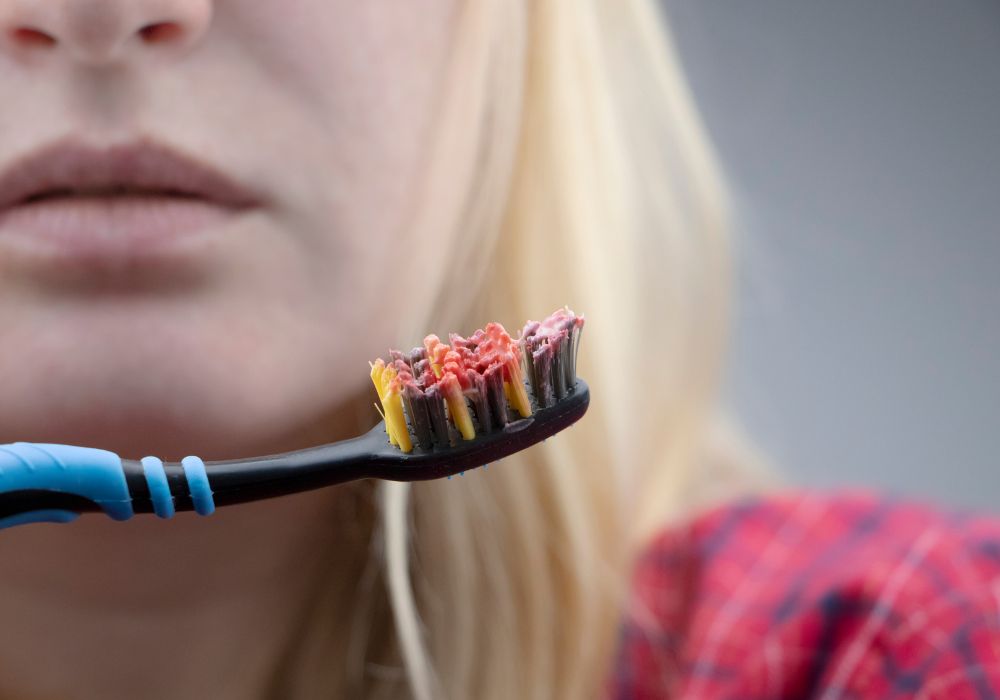
If you want to improve your gum health, it is important to make some dietary changes. By consuming certain foods that are rich in vitamins and minerals, you can help strengthen your gums and prevent them from bleeding when you brush. Here are some dietary changes that you can make to achieve healthier gums:
Vitamin C Rich Foods
Vitamin C is an essential nutrient that helps to strengthen your immune system and promote healthy gums. Consuming foods that are rich in vitamin C can help prevent gum disease and reduce the risk of bleeding gums. Some vitamin C rich foods that you can include in your diet are:
- Citrus fruits such as oranges, lemons, and grapefruits
- Berries such as strawberries, raspberries, and blueberries
- Kiwi
- Mango
- Pineapple
- Papaya
- Broccoli
- Brussels sprouts
- Red and green peppers
Calcium Enriched Foods
Calcium is another important nutrient that helps to promote healthy teeth and gums. Consuming foods that are rich in calcium can help strengthen your gums and prevent them from bleeding. Some calcium enriched foods that you can include in your diet are:
- Milk and dairy products such as cheese and yogurt
- Leafy green vegetables such as kale, spinach, and collard greens
- Soybeans and tofu
- Almonds
- Salmon and sardines (with bones)
- Fortified orange juice and cereals
By making these dietary changes, you can help improve your gum health and prevent bleeding gums. Remember to brush your teeth twice a day with fluoride toothpaste, floss regularly, and visit your dentist for regular check-ups and cleanings.
Lifestyle Modifications
If you want to stop your gums from bleeding when brushing, you need to make some lifestyle changes. Here are two sub-sections that can help you achieve this.
Quit Smoking
Smoking is one of the leading causes of gum disease. It weakens your immune system, making it harder for your body to fight off infections. Smoking also reduces blood flow to your gums, making it harder for them to heal when they are damaged.
If you want to stop your gums from bleeding when brushing, you need to quit smoking. This can be a difficult process, but there are many resources available to help you. You can try nicotine replacement therapy, such as patches or gum. You can also try counseling or support groups to help you quit.
Stress Management
Stress can also contribute to gum disease. When you are stressed, your body produces more cortisol, a hormone that can weaken your immune system. Stress can also cause you to clench your teeth, which can damage your gums.
To stop your gums from bleeding when brushing, you need to manage your stress levels. There are many ways to do this, such as exercise, meditation, or therapy. You can also try relaxation techniques, such as deep breathing or yoga.
By quitting smoking and managing your stress levels, you can improve your gum health and stop your gums from bleeding when brushing.
Frequently Asked Questions
What are some common causes of bleeding gums when brushing?
Bleeding gums when brushing can be caused by a number of factors, including poor oral hygiene, gum disease, hormonal changes, vitamin deficiencies, and certain medications. Brushing too hard or using a toothbrush with hard bristles can also cause bleeding.
How can I prevent my gums from bleeding when brushing?
The best way to prevent bleeding gums is to maintain good oral hygiene. This includes brushing your teeth twice a day with a soft-bristled toothbrush, flossing daily, and using an antiseptic mouthwash. It’s also important to eat a healthy diet and avoid smoking.
What are some home remedies for bleeding gums?
There are several home remedies that can help reduce bleeding gums, including rinsing your mouth with salt water, applying a cold compress to your face, using a hydrogen peroxide rinse, and oil pulling with coconut oil. However, it’s important to note that these remedies should be used in conjunction with proper oral hygiene and should not replace professional dental care.
Is it normal for gums to bleed when flossing?
It’s not uncommon for gums to bleed when flossing, especially if you haven’t flossed in a while. This is because flossing helps remove plaque and bacteria from between your teeth and along your gum line, which can cause irritation and bleeding. However, if your gums continue to bleed after a few days of flossing, you should see a dentist.
When should I see a dentist for bleeding gums?
If your gums continue to bleed despite practicing good oral hygiene and using home remedies, you should see a dentist. This could be a sign of gum disease, which can lead to more serious oral health issues if left untreated. Your dentist can perform a thorough examination and recommend the best course of treatment.
What are some medical treatments for bleeding gums?
If your bleeding gums are caused by gum disease, your dentist may recommend professional cleaning, scaling and root planing, or antibiotics to help control the infection. In severe cases, surgery may be necessary to remove damaged tissue and promote healing. It’s important to follow your dentist’s recommendations and maintain good oral hygiene to prevent further complications.


